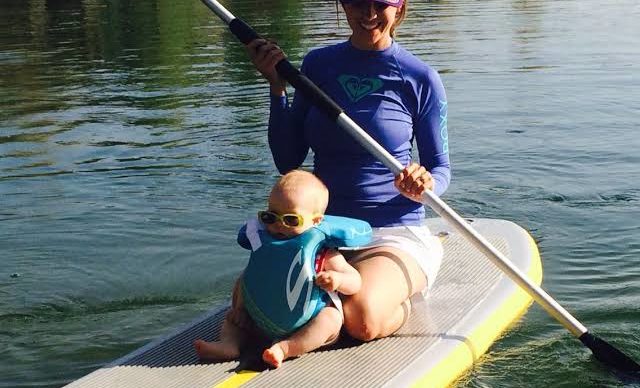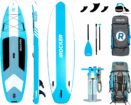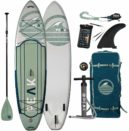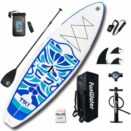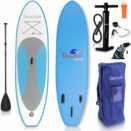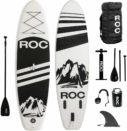If you’re a parent who enjoys standup paddleboarding, then you’re probably familiar with the conflict between wanting to enjoy your hobby and the wish to introduce your young kids to the sport. Unlike many outdoor water sports, paddleboarding is a solo endeavor, and bringing kids can turn it into a different activity. Some parents don’t bring kids along until they are old enough to paddle on their boards, but others opt to set aside time to bring their kids along, to try and enjoy as a family.
It is quite possible, though, to take a young child onto your paddleboard and still have fun — provided that you follow certain habits for safe and comfortable paddleboarding.
Make Sure You Are a Competent Paddleboarder
Make sure you learn to paddleboard proficiently before you take a child on the paddleboard with you. Before bringing a child onto the board, you should be an experienced and competent paddleboarder yourself, stable on the board in all kinds of conditions. Adding an extra 40 to 50 pounds will dramatically affect the balance of the board, and you’ll have trouble if you don’t have the skills to manage your weight.
Use a Paddleboard That Is Large and Buoyant Enough
When paddling with a child, make sure you choose a board appropriate for the combined weight of you and your child. Paddleboards are rated for a certain weight, and being inconsistent with your board causes problems. If you’re too light for the paddleboard, turning and steering will be affected; if you’re too heavy for your board, balance will be an issue.
Choose a Safe Place to Paddleboard
Stay away from places with waves and currents when paddling with your kids. This should be common sense: choose protected water conditions when paddleboarding with a child. Small lakes, calm beaches, and protected bays are all great options when taking your child paddleboarding. A small, preserved body of water makes it possible to locate and reach your child quickly should a fall occur.
Make Your Child Wear a PFD
For adults, this is a personal choice. But when it comes to your children, there should be no choice at all: make sure they ALWAYS wear a PFD while paddleboarding. In the event of a fall, the board can hit the child on the head, or the child might become momentarily trapped under the board. You might accidentally hit the child on the head with your paddle, or the child might accidentally swallow water. Any of these, as well as other events, can create an emergency for the child, and a PDF can help your child stay away from harm’s way.
Make Sure Your Child Can Swim
A PDF can sometimes fail to float kids in an upright position, or it may become loose in the water. Your child should be comfortable in the water and be able to demonstrate good swimming conditions before they are allowed on your paddleboard. Unlike kayaking or canoeing, paddleboarding comes with an inherent risk of falling into the water. Your child must have excellent swimming skills before they join you on the paddleboard.
Seat Your Child on the Board First
It’s challenging to bring a child onto a paddleboard if you’re already on it. Instead, seat the child on the paddleboard first. If you want, give them some time to practice getting comfortable on the board, moving from sitting to a kneeling position. Let them get familiar with the balance of the board, then get the child seated firmly, just in front of where you usually stand on the board.
Begin Paddling From the Kneeling Position
After the child is firmly seated, climb on the board from the back and move forward to where you will eventually be standing. Begin paddling from a kneeling position to ensure that you and your child are comfortable with the balance of the board. It will take some experimentation to determine the proper balance point. Your standing position will be slightly behind where you usually stand to balance the extra weight of your child. Every board will be different, however.
Have Fun!
Now that you’re ready, you can enjoy these moments together. You never know — they might love paddleboarding so much that it won’t be long before you have to teach your child to paddle their board.
